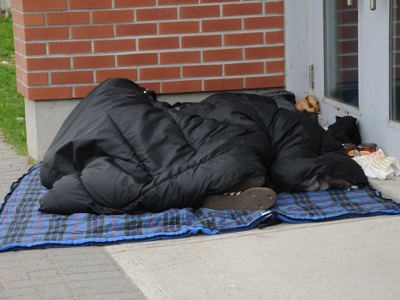Updated — Jan. 19, 1:56 p.m.
Greater Sudbury’s Community Advisory Committee is reviewing information heard at the Community Consultation on Homelessness at Tom Davies Square on Jan. 17 to identify the needs and priorities for residents who are homeless or at risk of becoming homeless.
Representatives from several community groups, as well as a number of citizens, shared their stories and suggested recommendations to deal with homelessness in Greater Sudbury. Those stories included building new shelters, partnering with faith-based organizations and developing transitional support programs for people moving into subsidized housing.
Nancy Dubé, chair of the Community Advisory Committee, said the committee will look at all the information and determine top priorities for the community. From there, a community plan will be created and be sent to city council and the federal government for approval.
“It could be anywhere between three to five priorities that we come up with,” she said. “Then we will look at what is the key priorities that fit into the funding from the federal government, and then we will move forward to request RFPs to community agencies to apply for funding to deliver the services.”
Dubé said around $226,000 in funding per year for the next three years will be available through the federal government to help address the top priorities, once they are established.
Major Barbara Carey, who works with the Salvation Army, said it’s time to spend money on the problem of homelessness instead of conducting more studies.
“It’s time to put the money on the front line where it can be used the best,” she said. “Unfortunately right now people have to make the choice between feeding their children and paying their rent and sometimes making all the sacrifices is not enough.”
Marlene Gorman, executive director of the YWCA, said the system needs to change so it is consistent.
“The federal government needs to play a leadership role in the delivery and development of new social housing units,” she said. “The system is currently so fragmented that without leadership and firm regulations, new money will not reach those who need it most.”
Gorman also said a national poverty reduction strategy should be adopted and safe building design measures should be incorporated into post-shelter housing for abused women.
John Rimore, executive director with the John Howard Society, said the city should work with individual faith organizations to “provide each year one affordable and safe housing unit with ongoing support for six to eight months for a family in need.”
Rimore said if each church invested $2,000 each year it would make a big difference in helping families and individuals.
“In our opinion this is the step that has been missing and needs to be taken by the City of Greater Sudbury if we are to resolve the problems and issues associated with homelessness.”
Terry Copes, staff lawyer with the Sudbury Community Legal Clinic, said though there is need for shelters and affordable housing, transitional support is needed to help those move from a shelter into a permanent home.
He said there is a need for life-skills training, especially for people entering subsidized housing for the first time.
“They really don’t have a clue as to what is required in terms of living in a large apartment building with other people,” he said. “Things which — within their peer group that seems like acceptable behaviour — may not be acceptable behaviour living in a large building with a lot of other people.”
Not all speakers had suggestions on how to fix the problem. Darlene Jacques shared her story of how she once had a good paying job at a mill until it closed in 2006. From there, she and her husband Carl, who she said suffers from serious health concerns, have been moving to different communities throughout the province to find employment and housing.
Jacques said she’s searched everywhere for a job and assistance, and finally decided at the age of 51 to return to school.
“My only means of support has been the money I received from OSAP in September,” she said. “I applied for social assistance ... after gathering all the necessary documents and using precious financial resources to get to the office. We were refused.”
Jacques said she had one message regarding homelessness.
“If you can change the situation, please change it,” she said. “The first (of the month) is almost upon us again and we don’t know where the money is going to come from. There’s a very good possibility that Carl and I will be homeless and will be living on the street.”
Greater Sudbury Mayor Marianne Matichuk was in attendance for the meeting. One resident, who spoke with Northern Life after the meeting, said she was surprised no city councillors were in attendance.
“If people with little children can manage to take them out in the cold ... why can’t councillors make an effort to be there?” she said.
“I think homelessness impacts us all on some level or another...it’s something that is relevant to all of us.”
